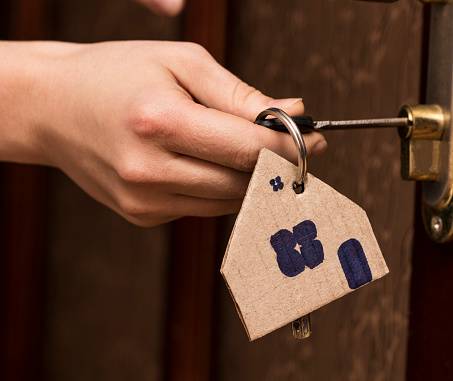Unlocking Your RRSP: The Home Buyers Plan Explained
Unlocking Your RRSP: The Home Buyer’s Plan Explained In order to purchase or construct a qualified house for yourself or a relative with a handicap, you may make a withdrawal from your Registered Retirement Savings Plan (RRSP) under the house Buyers’ Plan (HBP). Withdrawals from the HBP must be repaid within 15 years. If you are the owner of more than one RRSP, you may make withdrawals from any or all of them. Up to $35,000 ($70,000 for a couple) of your RRSP assets may be withdrawn tax-free to use towards a down payment on a property. You can’t access the money in a locked-in RRSP or a group RRSP, for example. Participation in the HBP is contingent upon meeting the following requirements: You must be a first-time buyer to qualify. A signed contract to purchase or construct a qualified residence for yourself or a family member who is disabled is required. The money you’re withdrawing from your RRSP must have been in the bank for at least 90 days. When you take money out of your RRSPs for the HBP, and until the time you buy or build a qualified house, you must be a Canadian resident. Within a year of purchasing or constructing the qualifying house, you must move in and use it as your primary residence. You must have the intent that the person with a handicap for whom you purchase or construct a qualified house, or whom you assist in purchasing or constructing a qualifying home, will use the home as his or her permanent residence. If your repayable HBP amount is zero on January 1 of the year of the withdrawal, and you fulfil all the other HBP eligibility rules, you may be eligible to enroll in the HBP again. The greatest thing is that if you pay back the money within 15 years, you won’t have to pay taxes on the withdrawal. The First-time Home Buyer Rule If this is your first time buying a property, you are termed a “first-time buyer.” You are not eligible for first-time homebuyer status if you plan to live in a residence that was acquired by your spouse. The 4-year rule If you did not own a property or reside in a home acquired by your spouse for 4 calendar years previous to 2019, you may qualify for the HBP. You may rejoin the HBP four calendar years after relocating to a flat, for instance, if you and your spouse have divorced and you no longer live together. You may become qualified in 2022 if you relocate in 2018. Before you may sign up for the HBP programme again, any outstanding debt must be settled in full. Qualifying for Homebuyers’ Plan after relationship breakdown, withdrawals after 2019 Withdrawals made after March 2019 are subject to the new policy mentioned below. If you and your husband or partner are no longer living together due to marital or relationship problems, you may be eligible to participate in the Homebuyer’s Plan. Your separation period prior to the withdrawal date is at least ninety days. You and your spouse started living apart in the year of the withdrawal, or during the preceding four calendar years. If the Homebuyers Plan participant already owns a home that was their principal residence at the time of the withdrawal but is not the same as the dwelling they intend to purchase with the Homebuyers funds. If the participant sells or terminates their right to the principal residence to their former spouse no later than the end of the second calendar year following the year of the withdrawal, or if the participant remarries before the end of the second calendar year following the year of the withdrawal, then the Homebuyers Plan participant may use it. No sooner than 30 days prior to the withdrawal, and no later than September 30 of the year following the withdrawal, does the Participant acquire the interest or right of the other spouse in the home that was the matrimonial home; and if the Participant has a new spouse at the time of the withdrawal, the new spouse may not own or occupy a dwelling that is the Participant’s primary residenceI How to Withdraw RRSP Funds Under The Home Buyers Plan Fill out form T1036 to make a tax-free withdrawal from the Home Buyers plan. This is a request to withdraw money from a registered retirement savings plan under the Home Buyers’ Plan (HBP). To notify your bank of your desire to withdraw money, please complete this form. Be cautious to follow the correct procedures, since it is impossible to take the funds from your RRSP and then claim they were part of the Home Buyers Plan. Multiple Home Buyers Plan withdrawals are permitted every calendar year, up to a maximum of $35,000. RRSP Home Buyers Plan Repayment Let’s get to the bad news now. The Home Buyers Plan requires you to make annual payments on the full amount of money you withdraw. These payments must begin in the second year after the closing of the Home Buyers Plan withdrawal. The Home Buyers Plan functions similarly to a loan, although interest-free. All money taken out must be paid back within 15 years, at the rate of one-fifteenth each year. Any payments made to settle an outstanding HBP amount will not reduce your contribution limit. Repaying an HBP loan with RRSP contributions is not eligible for the RRSP tax deduction.The amount reported on Schedule 7 as an HBP payback will be subtracted from any RRSP contribution refunds. You should also check that your RRSP contributions are being applied to the HBP loan, not just your RRSP. Many Canadians don’t do this and end up in arrears on their HBP as a consequence. Related posts 18 July 2023 Unlocking Your RRSP: The Home Buyer’s Plan Explained 10 July 2023 How Your Home Warranty Can Help You in an Emergency How Your Home Warranty Can Help You in an Emergency The last thing you want to face
Unlocking Your RRSP: The Home Buyers Plan Explained Read More »













